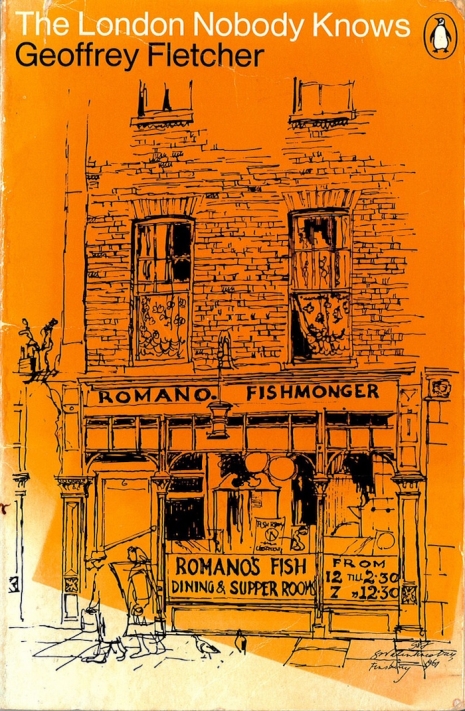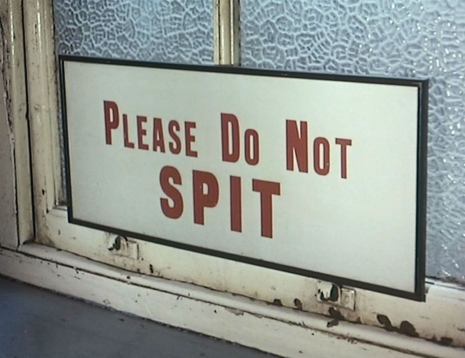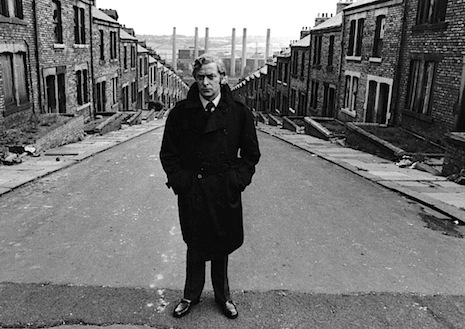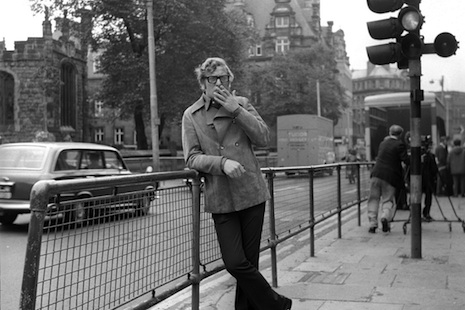
The great actor James Mason stands in a Victorian urinal in London talking about goldfish. Here, Mason says referring to this Holborn convenience, is true democracy as “All men are equal in the eyes of a lavatory attendant.” It’s one of the many quirky moments in an excellent documentary called The London Nobody Knows.
Another instance is Mason turning up at the door of a resident on Hanbury Street to view the garden where Jack the Ripper brutally murdered Annie Chapman. The streets look little changed in the seventy-nine years since her killing—dark, derelict, and foreboding.
Mason was a major box office star when he fronted this delightful short. He had recently starred in Stanley Kubrick’s Lolita and Hitchcock’s North by Northwest and was yet to make the few ill-considered choices that briefly dimmed his star at the start of the seventies. Between acting commitments in early 1967, Mason donned his brown brogues, wool cap and camel jacket to play—or rather perform—the role of inquisitive tour guide across the cobbled lanes, the dereliction, the people, the buskers, the down and outs, the nooks and crannies of a radically changing city.
The London Nobody Knows is a delightful yet oddly haunting film. The tone is set at the beginning when Mason visits the derelict Bedford Music Hall—the favorite venue of the legendary Marie Lloyd, the queen of music hall. As Lloyd is heard singing “The Boy I Love Is Up in the Gallery,” Mason recounts how the ghost of a little known performer Belle Elmore was said to haunt the theater. Belle, Mason explains, was better known as Cora Turner—wife and victim of one Dr. Hawley Harvey Crippen—the notorious murderer. This mix of the comic and the darkly tragic filter through the whole film—as can be seen by the later sequences of down and outs and meths drinkers—those poor unfortunates who sought inebriation—and usually blindness and death—in the consumption of denatured alcohol. Even an almost picturesque scene by the River Thames is tinged by the tale of pirates chained hand and foot by the edge waters to drown. Locals came and ate picnics while watching these poor brigands die.
As a side note: the Bedford Music Hall was where Peter Sellers parents performed and Sellers was born and raised in a tenement apartment next to the theater. Sellers later claimed he was a reincarnation of another Bedford artiste—Dan Leno.

Now, when I said Mason performs as “tour guide”—he is in fact giving his interpretation of Geoffrey Scowcroft Fletcher—a journalist, writer, artist and long forgotten pioneer of what is now ponderously termed “psychogeography”—on whose work the film is based. Fletcher wandered London drawing its inhabitants, noting down events, sights and things of historical importance which he then wrote up in a weekly column for the Daily Telegraph. Fletcher’s books—The London Nobody Knows (1962), Down Among the Meths Men (1966) and a pinch of London’s River (1965) are the source material for Mason’s journey. (The Situationists were, of course, also known for taking similarly drifting “revolutionary” strolls, which they termed “dérive.”)
The London Nobody Knows was directed by Norman Cohen and produced by Michael Klinger. Cohen went onto make his name as a director of hit British comedy films like Till Death Us Do Part (1969), Dad’s Army (1971), and Adolf Hitler: My Part in His Downfall and the series of seventies sex comedies—-Confessions of a Pop Performer, Confessions of a Holiday Camp and Confessions of a Driving Instructor. While Klinger who produced Roman Polanski’s early films Cul-de-Sac and Repulsion went on to produce Michael Caine in Get Carter and Pulp and the Lee Marvin/Roger Moore feature Shout at the Devil.

If there’s one thing you are going to watch today then make it this—as it’s a rewarding look back at a world long gone (London during a year change) the year of so-called psychedelia and the “summer of love.” As can be seen from this film—that world was media hype—the world of The London Nobody Knows was very, very real.
Watch ‘The London Nobody Knows’ after the jump…









